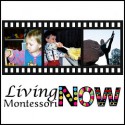As the holidays
beckon, many parents will find plenty of extra time with their children at
home. Why not make it quality time and cuddle up behind a bunch of great books?
My children and I try to “FEasT” on three a day.
Alright
– I’m no fan of teaching acronyms either. Still, I am a huge proponent of
simple mnemonic devices constructed to make my life easier. The “FEasT” acronym
stands for the types of books I’d like you to read every day during the
holidays with your children: a “F”avorite book, an “Eas”y book and a “T”ough
book.
Favorite book. Remember
what your favorite book was as a child? Maybe you marveled at the mischief of Curious George or yearned for your
grandfather’s reassuring read alouds of The
Adventures of Tom Sawyer. Perhaps you loved it when your mother sat you are
on her lap in the family rocking chair and rocked away as you both enjoyed
Robert Munsch’s Love You, Forever.
All of us had favorite books as children, and I like to encourage parents to
especially read these books to their children. You may not know this, but you
read these books a little bit differently, and your children will pick up on
that.
Additionally,
when your children show preference to a particular book, you want to read those
books constantly. If your children insist on you reading a chapter from a Harry
Potter book, by all means – read that chapter. Have children who delight in the
silliness of Captain Underpants? Read away! Almost all parents I have ever met
can share a story of a book that annoys them to no end because their children insisted on them reading
that book aloud 875 times. Sound familiar? You need to understand that your
child is memorizing that book. This is a great confidence booster that will
attract your children to read more. That is why easy books are so vital…
Easy book. This is a book
that you read again and again with your children. I have three children: Kate
(a third grader), Sean (a first grader) and Samantha (a preschooler…and a
handful!). While Kate and Sean may act cool in front of their baby sister, it
never ceases to amaze me how transfixed they will become as Samantha enjoys Sesame Street on television or brings me
her favorite Humpty Dumpty-shaped treasury of nursery rhymes for me to read to
her. Easy books build confident readers. Even though Kate is a pretty good
reader in her own right – reading plenty of chapter books about Judy Moody and
Magic Treehouse sleuths Jack and Annie – she still delights in any of our
endless collection of titles featuring The
Berenstain Bears and Arthur. And
Sean marvels almost as much as me at the true genius of Dr. Seuss, who manages
to always include meaningful messages embedded in rhyming confidence-builders
designed to interest anyone in reading by making all audiences view themselves
as bonafide readers.
Tough book. When I work
with teachers, I usually point out that this is the greatest failure I most
frequently see in schools. I bet just about every first grader in America saw the
movie Pirates of the Caribbean, and I
bet you all of those first graders understand the movie. I also bet that most
of those first graders would not be able to read the script. Our listening
comprehension significantly outpaces our reading comprehension at a young age.
Thus, parent read alouds are vital.
While
I love that schools across the country celebrate Dr. Seuss Day every March, I
am incessantly annoyed to see so many adult volunteers go to classrooms to read
aloud Dr. Seuss books. Have you ever noticed that in the upper right-hand
corner of many Dr. Seuss books there is a Cat in the Hat with the slogan “I Can
Read It All By Myself” arched around it? That statement is meant as a
reaffirming message for children, not adults. Kids can read Dr. Seuss books!
They cannot read more complicated, “wordier” texts. So why not pick out more
challenging texts with topics that will intrigue your child? My father was a
history major in college, and he passed down his passion for history to me by
reading me stories about explorers, our Founding Fathers, astronauts and an
array of other figures. Parents have a responsibility to pass along this
wisdom.
So,
the children have vacation from school. Mom and Dad have extra time off from
work. The malls are packed, the freeways are parking lots and nothing decent
seems to be on any of your 357 television channels. Why not spend this holiday
season by visiting your local library, bookstore or even your personal home
collection of books? Wouldn't it be great if more folks would choose to pig out
on something that will boost their children’s intellect rather than their
waistlines? “FEasT” on three books a day with your children during the
holidays, and you can inspire your family to become a household of readers.
Danny Brassell, Ph.D., is “America




















.gif)



















